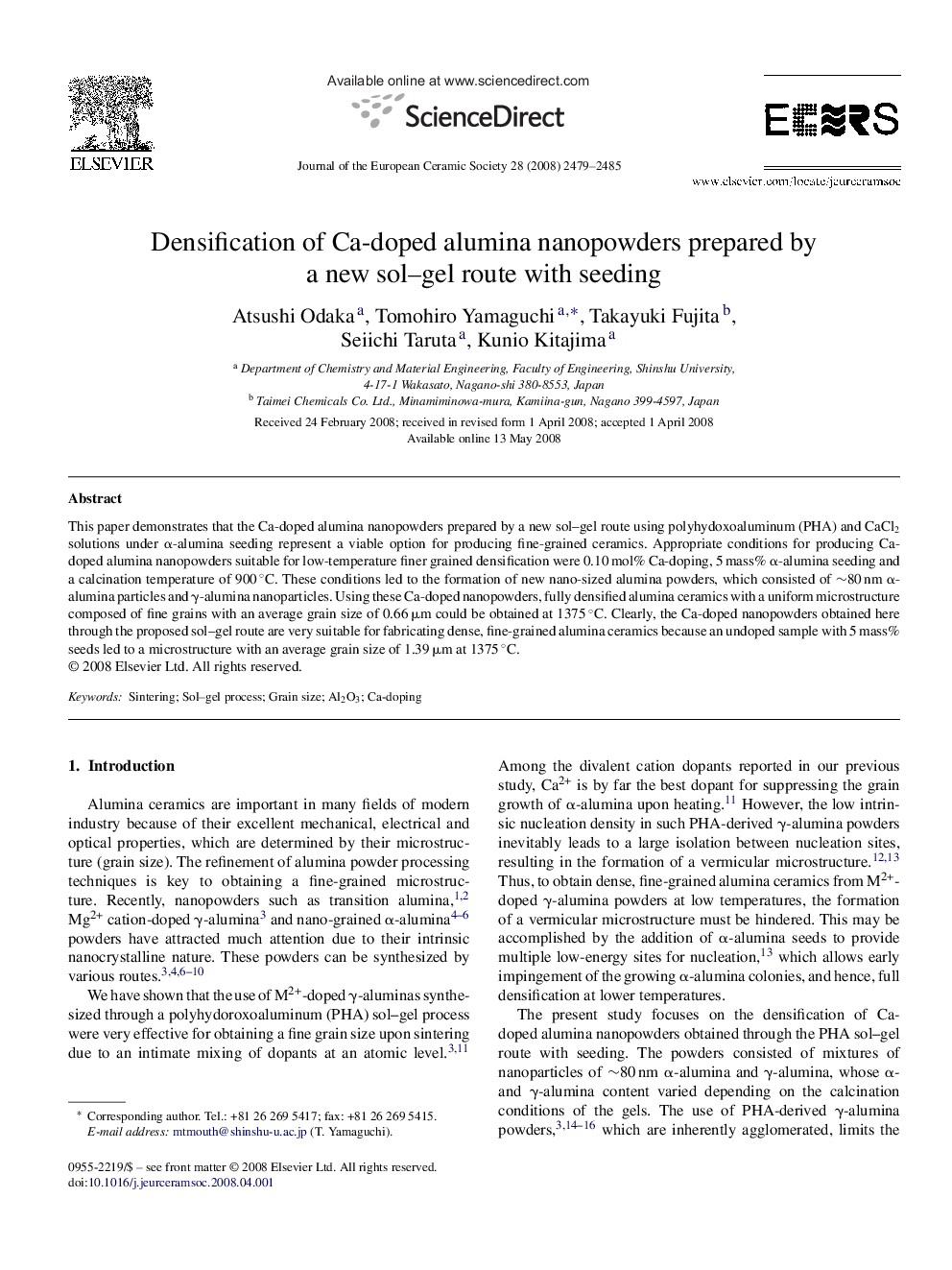| Article ID | Journal | Published Year | Pages | File Type |
|---|---|---|---|---|
| 1477754 | Journal of the European Ceramic Society | 2008 | 7 Pages |
This paper demonstrates that the Ca-doped alumina nanopowders prepared by a new sol–gel route using polyhydoxoaluminum (PHA) and CaCl2 solutions under α-alumina seeding represent a viable option for producing fine-grained ceramics. Appropriate conditions for producing Ca-doped alumina nanopowders suitable for low-temperature finer grained densification were 0.10 mol% Ca-doping, 5 mass% α-alumina seeding and a calcination temperature of 900 °C. These conditions led to the formation of new nano-sized alumina powders, which consisted of ∼80 nm α-alumina particles and γ-alumina nanoparticles. Using these Ca-doped nanopowders, fully densified alumina ceramics with a uniform microstructure composed of fine grains with an average grain size of 0.66 μm could be obtained at 1375 °C. Clearly, the Ca-doped nanopowders obtained here through the proposed sol–gel route are very suitable for fabricating dense, fine-grained alumina ceramics because an undoped sample with 5 mass% seeds led to a microstructure with an average grain size of 1.39 μm at 1375 °C.
